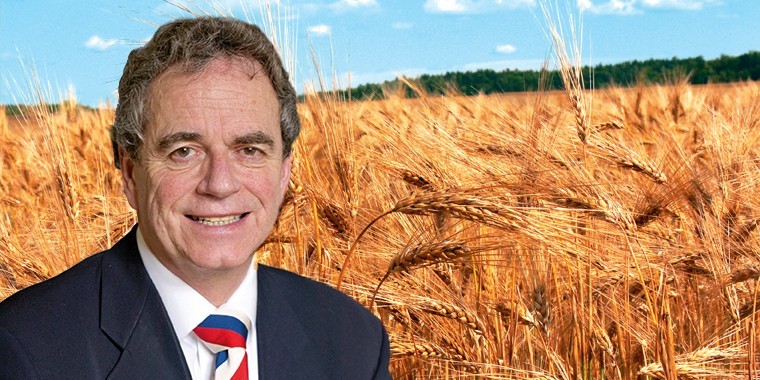There is an old saying: “When a thing starts going wrong, it keeps going wrong.” Well it certainly has this time! Since the inability to plant cereals last autumn, every subsequent ‘dawn’ turned out to be ‘false’, the last being the good weather in the first half of August, when we enjoyed four consecutive 34°C days for the first time since 1961. Ironically, some combines were idle as late-planted crops were not ripe.
We then had ‘weapons grade’ storms for two weeks. It seemed “the Gods were weeping tears of rain” for the devastation of our crops. There is usually some good associated with these disasters, but it’s hard to find any this time. The much-reduced UK wheat crop meant that higher prices had already been factored into the feed wheat market, so end users have made alternative arrangements with cargos of feed wheat from Romania, Bulgaria and Denmark already being discharged in the UK.
As I predicted last month, domestic milling prices have risen, but they will only rise to the imported values, and that has happened. The miller will not be short of milling wheat at current high prices. He can choose either UK or imported and the public has been told that bread prices will be higher. We still don’t know if the UK crop is nine or ten million tonnes, but we know there is now more feed wheat in that mix.
The tipping point comes when too much has been imported and farmers start selling. The Brexit deadline is likely to accelerate this. I have previously highlighted years where at the start you have a deficit with a big price (as we have now) but by the end of that cereal year it turned into surplus, with a big drop in value, often when the next potential big crop has been established.
I can only repeat that if you have the milling quality and can sell at the equivalent of a high import price you should do so. Despite firmer sterling, UK wheat markets are nearly back to recent highs. You can make some premiums for low grade hard and soft milling and these should be taken.
Some things don’t change; like malting barley. The huge increase in spring planting meant we could stand the loss of malting quality in the last two weeks of August as there was already sufficient safely combined to meet the much reduced demand of the UK maltster. Denmark has produced a very good crop of malting barley to supply our German and Dutch customers and Scotland has enough surplus distilling barley to ship to East Anglia and fill the max 1.65 nitrogen market.
This won’t be a good year for the industry, farmers, grain marketing co-ops and merchants alike. We need to look for the post-Brexit trading opportunities. First go and plant the biggest wall-to-wall wheat crop we have ever seen. Wheat growers should take consolation in the fact that they only suffer this type of year a few times in a lifetime. Oilseed rape growers, however, are miserable from the day they plant, (when it doesn’t come up) for 11 months – when it yields almost nothing!




